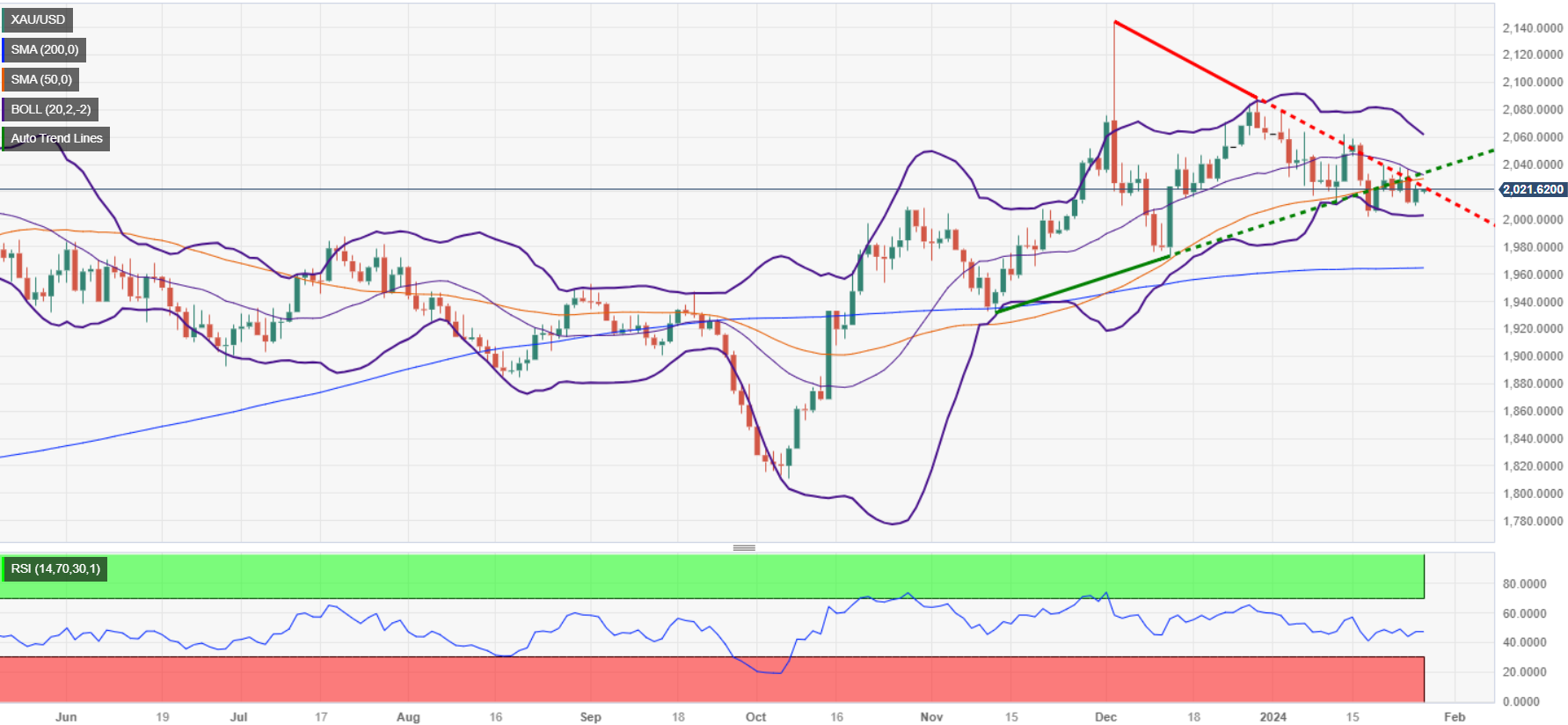Gold Price Forecast: XAU/USD holds firm amid mixed US data, eye US PCE figures
- Gold modestly recovers, influenced by strong US GDP and falling Treasury yields.
- Mixed US data: unchanged Durable Goods Orders and higher jobless claims fuel market uncertainty and Fed rate cut speculations.
- Markets await US PCE Price Index and Fed policy decision; Middle East tensions also impact dynamics.
Gold price recovered after sliding more than 0.70% on Wednesday and rising 0.35% on Thursday amid robust US data and falling US Treasury bond yields. At the time of writing, XAU/USD exchanges hands at $2020.40, virtually unchanged as the Asian Pacific session begins.
XAU/USD remains steady after strong US GDP and weak durable goods and labor market data
In the fourth quarter of last year, the US economy grew 3.3% on a quarterly basis, which, although trailing Q3’s figures, exceeded estimates of a mediocre 2% by analysts. All that said, for the entire year, the US Gross Domestic Product (GDP) in 2023 rose by 2.5%, higher than in 2022 by 1.9%.
Meanwhile, further data was mixed, with Durable Goods Orders surprisingly standing at 0% in December, below forecasts for a 1.1% increase and trailing November’s 5.5% reading. At the same time, US Initial Jobless Claims for the latest week jumped from 189K to 214K, higher than foreseen.
Following the data, traders remained cautious about pricing in the first Federal Reserve rate cut in March, with probabilities slumping below 50%. Nevertheless, investors are expecting the first cut in May and projecting five more, meaning the Federal funds rate (FFR) is scheduled to end at 4%, from 5.25%-5.50%.
Falling US Treasury yields bolstered Gold’s performance, as the European Central Bank’s (ECB) decision to hold rates triggered a rally in the bond market, as speculations for rate cuts piled up. Therefore, global bond yields plunged, with the US 10-year benchmark note plummeting six basis points to 4.12%.
In addition to this, the latest geopolitical developments in the Middle East sparked a recovery in the non-yielding metal prices after Houthis attacked two US flag Maersk ships that the US Navy escorted.
All in all, Gold traders brace for the release of the Fed’s preferred gauge for inflation, the Personal Consumption Expenditures (PCE) Price Index for December, ahead of next week’s monetary policy decision by Fed Chairman Jerome Powell and Co.
XAU/USD Price Analysis: Technical outlook
Even though Gold staged a comeback, it could be short-lived after failing to reclaim the 50-day moving average (DMA) at $$2029.91, which could pave the way to retest the $2000 barrier. A drop below that level might accelerate the downtrend towards the 100-DMA at $1978.55 before clashing with the 200-DMA at $1964.43. On the flip side, if XAU’s buyers regain the 50-DMA, upside risks will emerge at $2050.


